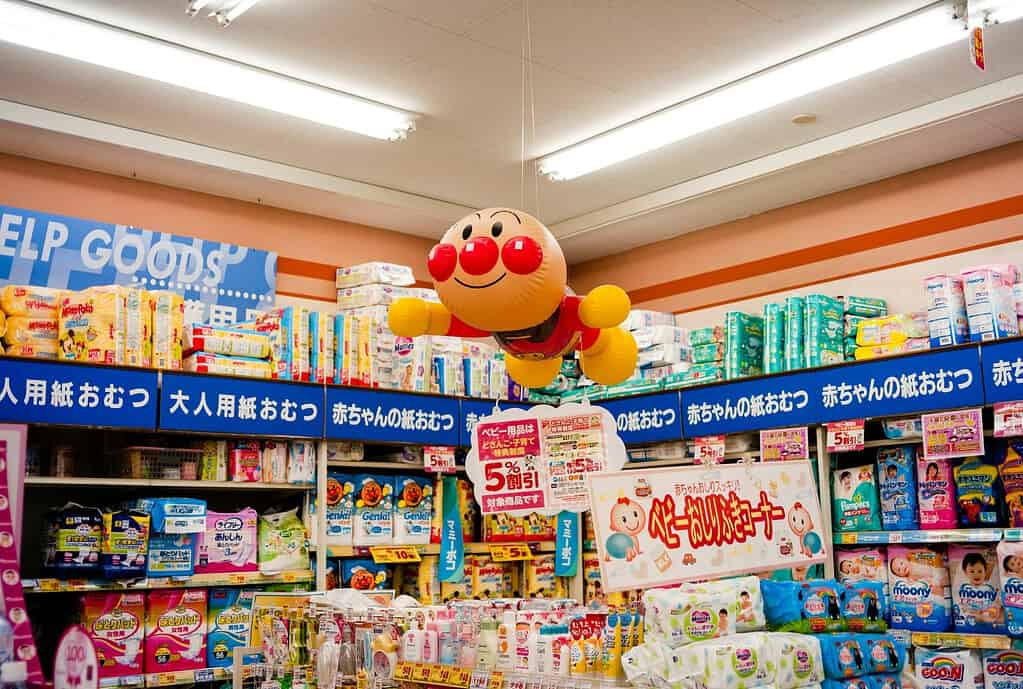
A Japanese company has unveiled the world’s first horizontally recycled diapers — diapers recycled from other diapers. This marks a significant advancement in sustainable childcare products and promises to drastically reduce landfill waste, cleaning up some of the stinky environmental impact of nappies.
Diapers are an environmental problem
Disposable diapers, or nappies as they are often called, have become an essential part of modern parenting. However, their environmental footprint is substantial. Each year, millions of tons of disposable diapers enter landfills across the globe. In the United States alone, an estimated 20 billion disposable diapers are thrown away annually, creating more than 3.5 million tons of waste.
The pollution from disposable nappies is particularly severe because of how durable they are. Most are primarily made from plastics and super-absorbent polymers, materials designed to last. Consequently, a single disposable diaper can take up to 500 years to decompose. During this time, the chemicals and plastics remain in the environment, posing potential risks to soil and water quality.
Then, of course, there’s the poop.
Each diaper is laden with human feces. When discarded in a landfill, this mixture can contribute to the spread of pathogens and contaminants in the environment. Furthermore, the presence of fecal matter complicates the potential for recycling these materials, leaving few options beyond the landfill, where they linger and pollute for hundreds of years.
The Japanese company, called Unicharm, said it has found a way to recycle nappies.
Can you recycle diapers?
The complex process involves sterilizing, bleaching, and deodorizing the used nappies.
“First, used dirty disposable diapers are dewatered, crushed into small pieces, washed, and separated by material,” a press release mentioned. “There is still some dirt and some odors at this stage, but the pulp extracted from disposable diapers is subjected to ozone treatment (sterilization, bleaching, and deodorization). The material is returned to a safe and clean condition and then used again to make new disposable diapers.”
The price for the recycled diapers is slightly higher, but competitive on the Japanese market. A packet of 42 diapers costs 1,078 yen ($7). Tsutomu Kido, a senior executive officer at Unicharm, says they trialed the products before and have recently received all the necessary approvals to go on the market.
“We have received approval from experts concerning hygiene,” according to The Mainichi newspaper. “Customers who have used these products said they were comfortable and felt no different from regular [diapers].”
Horizontal recycling has the advantage of allowing the same resources to be used repeatedly, the company mentions. Disposable diapers are mainly made from wood pulp, along with polymers made from petroleum resources, and plastic. “If these materials can be used repeatedly, then we can reduce the amount of wood and oil resources used,” the company says.
The disposable diaper market is worth over $70 billion a year, and diapers are one of the biggest contributors to public waste. Every minute, more than 300,000 disposable nappies are incinerated, sent to landfills, or improperly discarded.
To mitigate the environmental impact of disposable diapers, both policy intervention and consumer action are necessary. For instance, subsidies for cloth diapers or the provision of communal laundering services can help reduce the barrier to choosing these greener options. Realistically speaking, however, these products are just not as good as disposable ones.
The introduction of horizontally recycled diapers by Unicharm could mark a pivotal shift in the approach to sustainable diapers, and sustainable household products in general. As we move forward, it is imperative for other companies to take note and for consumers to support these innovations — and for us consumers to push towards them.









